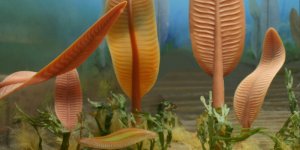| News / Science News |
Scientists record the sound of intact forest
By analysing the composition of sounds in a forest — called a soundscape — scientists can make cost-effective and reliable assessment of the forest, according to a new study conducted in Papua New Guinea.

Mountains covered with dense forest in Papua New Guinea. ![]()
A soundscape’s saturation refers to the variety of pitches and frequencies found in the sounds. The study confirmed that land-use zones with intact forest cover have significantly higher soundscape saturation.
Autonomous recorders set up at 34 locations in the Adelbert Mountains of Papua New Guinea covered sites ranging from pristine forests to small cacao farms. Led by Zuzana Burivalova, tropical forest ecologist at Princeton University in the United States, the study recorded almost 1,300 hours of sounds in July 2015.
Burivalova and his team found that soundscape saturation peaked at dawn and dusk, likely because most birds and amphibians vocalise in those periods. Sites with less forest cover due to human activity, such as farming, have less saturated soundscapes versus those with high forest cover, such as conservation and hunting zones.
Sound recorders make great tools for environmental assessment because they can be deployed in remote places and work autonomously for long periods.
Furthermore, soundscape data is a permanent record of a specific place and time, so the recorded soundscape can serve as a baseline to compare against future environmental changes. (SciDev.Net)
YOU MAY ALSO LIKE




